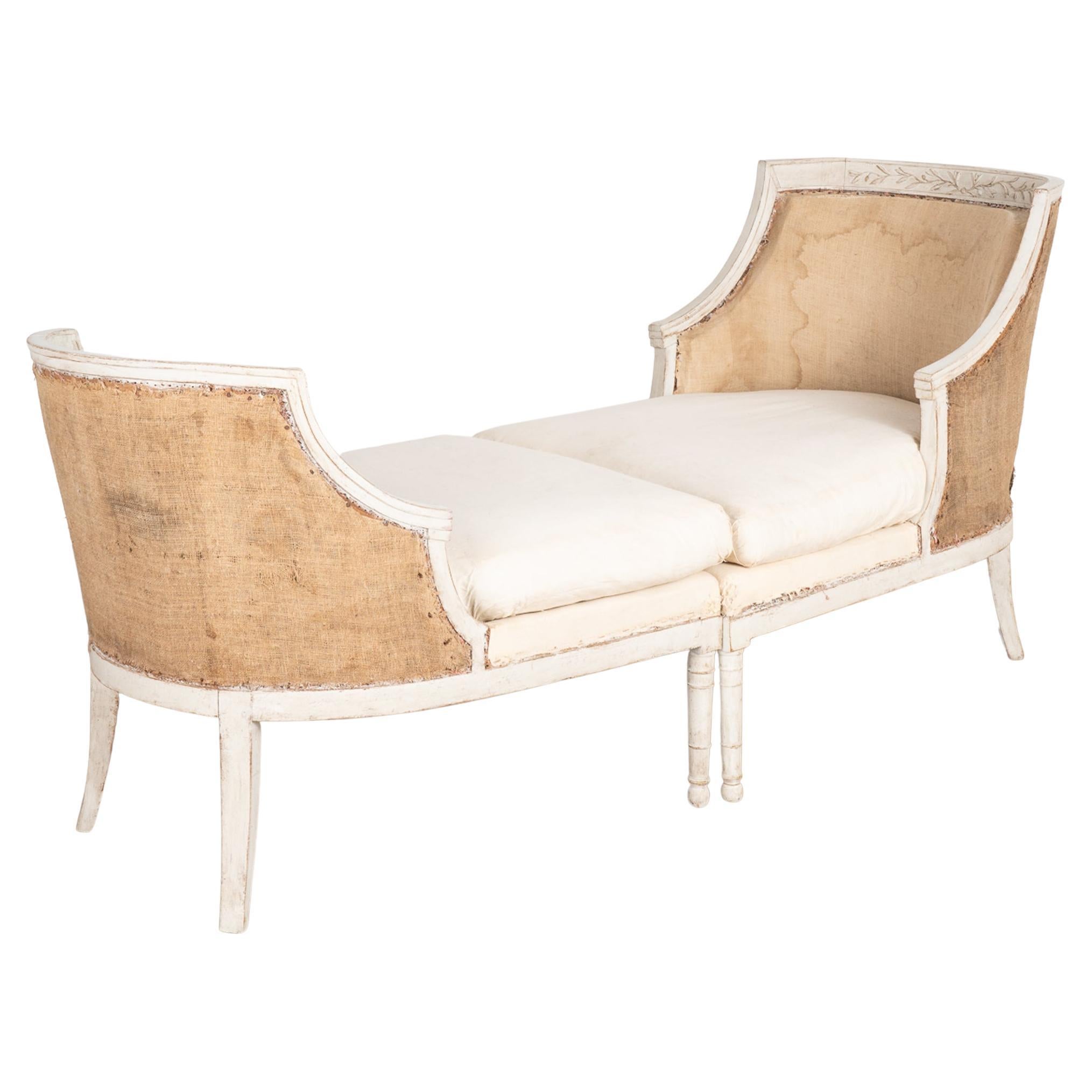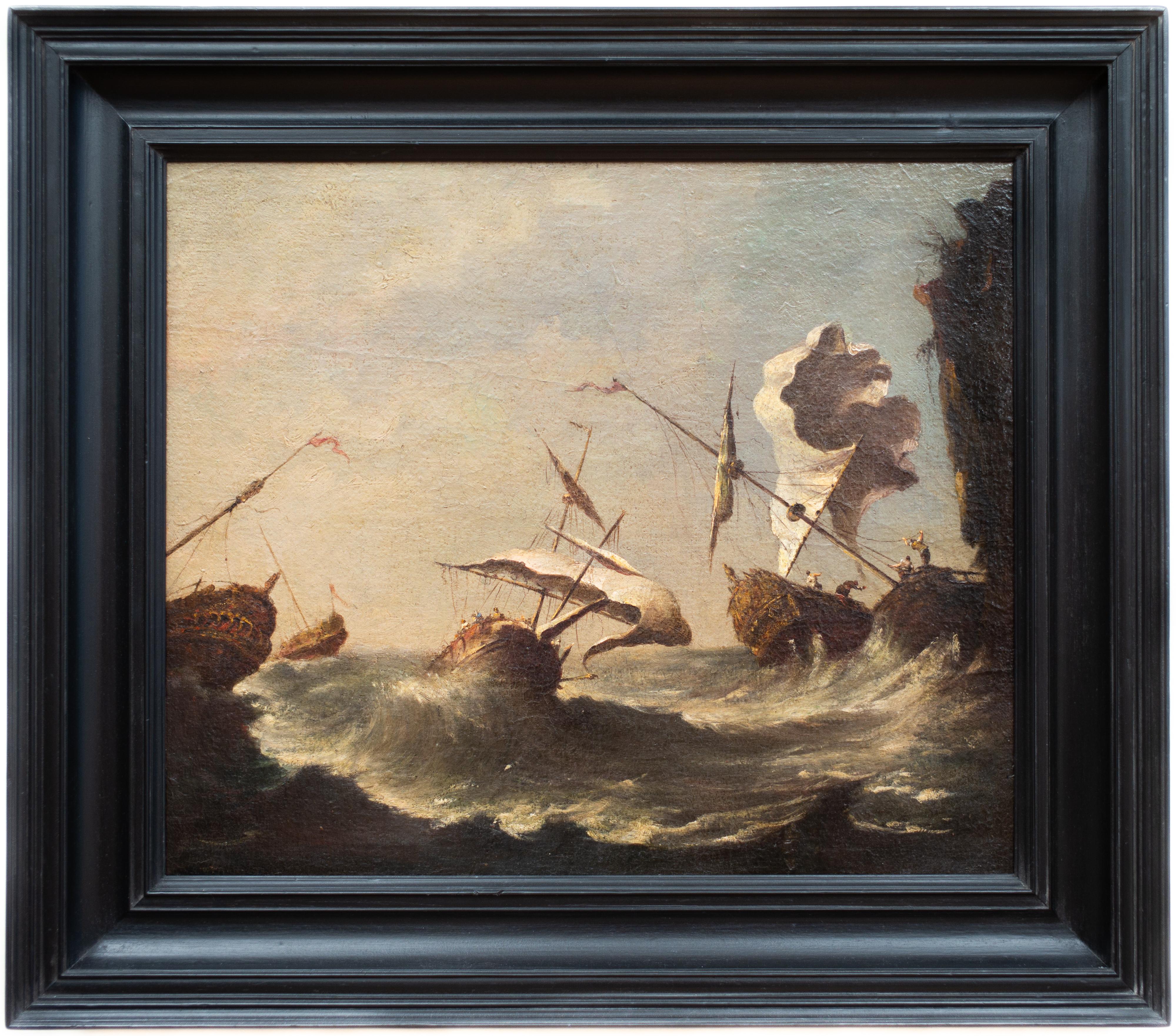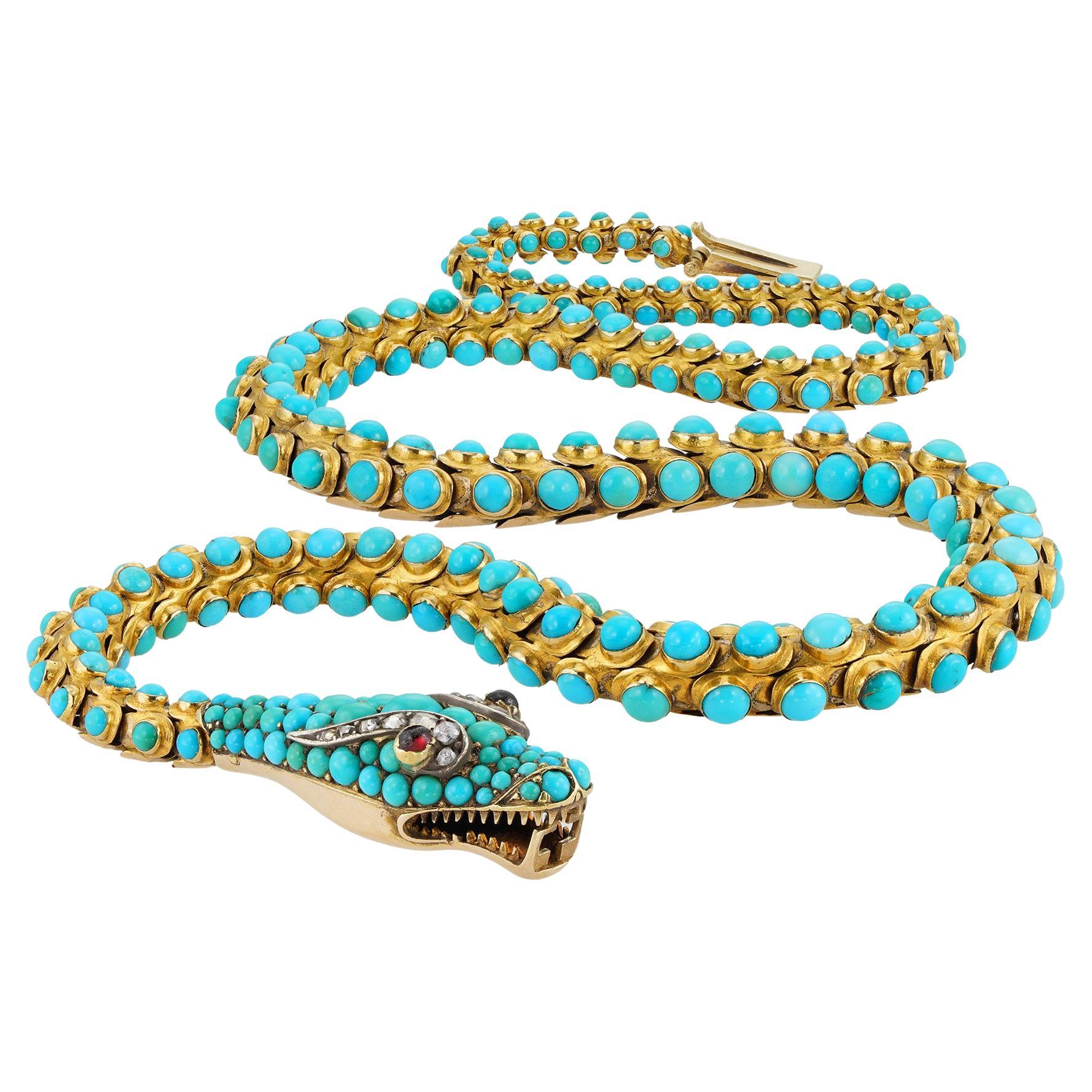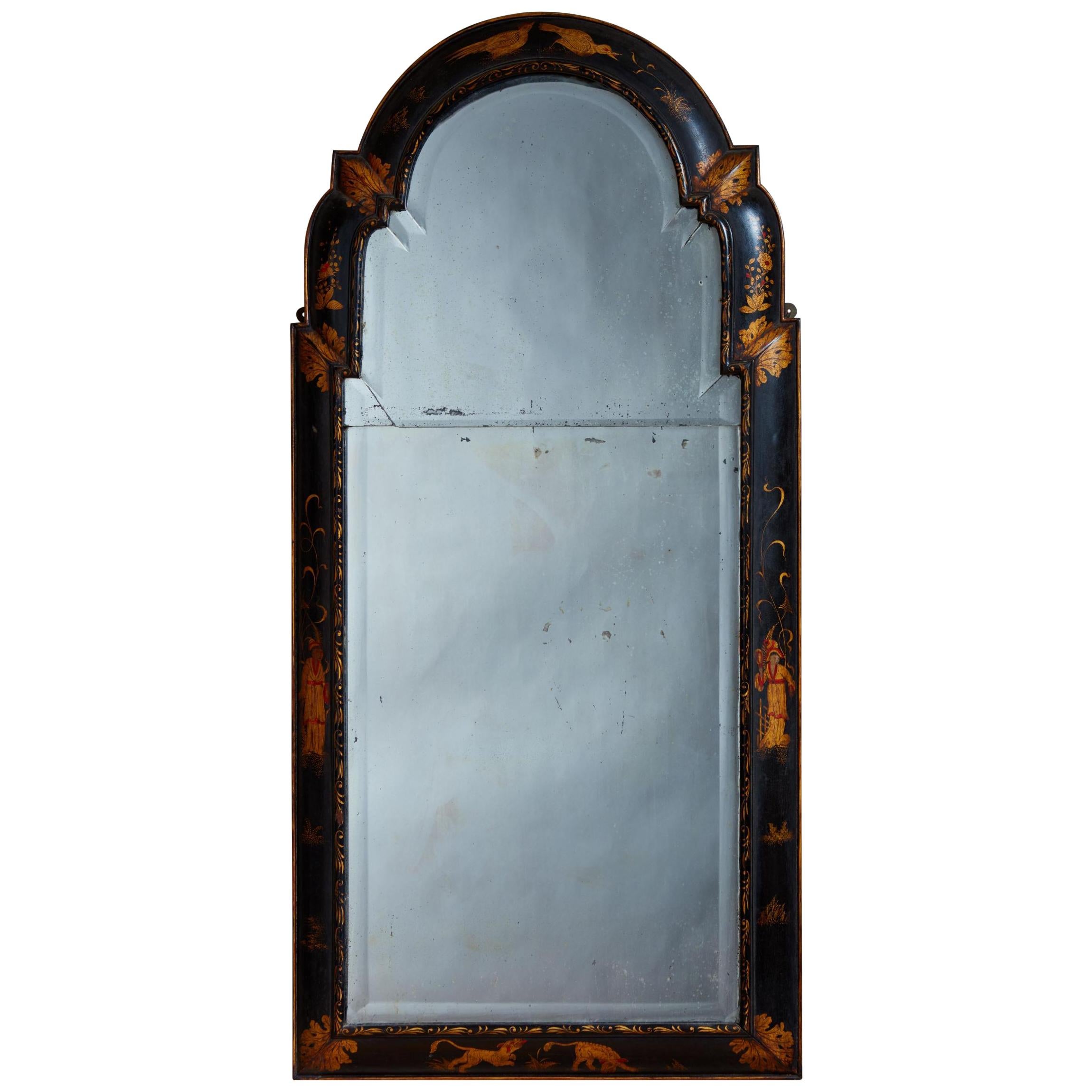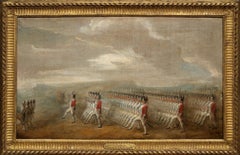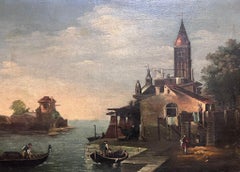Antiques
Past Perfect
Find your treasure within this definitive collection of provenance-rich antiques spanning centuries and distinctive periods.

1
to
4
12
8
9
4
10
9
1
10
1
5
3
1
Overall Height
to
Overall Width
to
15
2
15
10
6
5
3
3
2
1
1
1
1
1
1
1
1
1
1
1
1
1
15
5
12
1
1
1
1
12
10
6
6
4
Two royal portraits (the Duc d'Angoulême and the Duc de Berry) by H.P. Danloux
Located in PARIS, FR
These two royal portraits are a major historical testimony to the stay of the Comte d'Artois (the future Charles X) and his family in Edinburgh in 1796-1797. Given by the sitters to Lord Adam Gordon, the Governor of Edinburgh, and kept by family descent to this day, these two portraits provide us with a vivid and spontaneous image of the Duc d’Angoulême and his brother the Duc de Berry. Danloux, who had emigrated to London a few years before, demonstrate his full assimilation of the art of British portrait painters in the brilliant execution of these portraits.
1. Henri-Pierre Danloux, a portraitist in the revolutionary turmoil
Born in Paris in 1753, Henri-Pierre Danloux was first a pupil of the painter Nicolas-Bernard Lépicié (1735 - 1784) and then, in 1773, of Joseph-Marie Vien (1716 - 1809), whom he followed to Rome when, at the end of 1775, Vien became Director of the Académie de France. In Rome he became friends with the painter Jacques-Louis David (1748 - 1825).
Returning to France around 1782, he settled in Lyon for a few years before returning to Paris in 1785. One of his first portraits was commissioned by the Baroness d'Etigny, the widow of the former Intendant of the Provinces of Gascony, Bearn and Navarre Antoine Mégret d'Etigny (1719 – 1767). He then became close to his two sons, Mégret de Sérilly and Mégret d'Etigny, who in turn became his patrons. In 1787, this close relationship with the d'Etigny family was further strengthened by his marriage to Antoinette de Saint-Redan, a relative of Madame d'Etigny. After his marriage, he left for Rome and did not return to France until 1789. It was during the winter of 1790-1791 that he painted one of his masterpieces, the portrait of Baron de Besenval. Set in a twilight atmosphere, this portrait of an aristocrat who knows that his death is imminent symbolizes the disappearance of an erudite and refined society which would be swept away by the French Revolution.
The Jacobin excesses led Danloux to emigrate to England in 1792; many members of his family-in-law who remained in France were guillotined on 10 May 1794. Danloux enjoyed great success as a portrait painter in England before returning to France in 1801.
During his stay in England, Danloux was deeply under the influence of English portraitists: his colors became warmer (as shown by the portrait of the Duc d'Angoulême that we are presenting), and his execution broader.
2. Description of the two portraits and biographical details of the sitters
The Duc d'Angoulême (1775-1844) was the eldest son of the Comte d'Artois, the younger brother of King Louis XVI (the future King Charles X), and his wife Marie-Thérèse of Savoie. He is shown here, in the freshness of his youth, wearing the uniform of colonel-general of the "Angoulême-Dragons" regiment.
He is wearing the blue cordon of the Order of the Holy Spirit, which was awarded to him in 1787, and two decorations: the Cross of Saint-Louis and the Maltese Cross, as he was also Grand Prior of the Order of Malta.
Born on 16 August 1775 in Versailles, Louis-Antoine d'Artois followed his parents into emigration on 16 July 1789. In 1792, he joined the émigrés’ army led by the Prince de Condé. After his stay in Edinburgh (which will be further discussed), he went to the court of the future King Louis XVIII, who was in exile at the time, and in 1799 married his first cousin Marie-Thérèse Charlotte of France, the daughter of Louis XVI and the sole survivor of the royal family. The couple had no descendants. He became Dauphin of France in 1824, upon the accession to the throne of his father but played only a minor political role, preferring his military position as Grand Admiral. Enlisted in Spain on the side of Ferdinand VII, he returned home crowned with glory after his victory at Trocadero in 1823.
He reigned for a very short time at the abdication of Charles X in 1830, before relinquishing his rights in favor of his nephew Henri d'Artois, the Duc de Bordeaux. He then followed his father into exile and died on 3 June 1844 in Gorizia (now in Italy).
His younger brother, the Duc de Berry, is shown in the uniform of the noble cavalry of the émigrés’ Army. He is wearing the blue cordon of the Order of the Holy Spirit, awarded to him in May 1789, and the Cross of Saint-Louis (partly hidden by his blue cordon).
Born on 24 January 1778 in Versailles, Charles-Ferdinand d'Artois also followed his parents into emigration and joined the émigrés’ army in 1792. After his stay in Edinburgh, he remained in Great Britain, where he had an affair with Amy Brown...
Category
1790s Old Masters Antiques
Materials
Canvas, Oil, Wood Panel
The Parade of Swiss Guards a painting on canvas by Gabriel de Saint-Aubin
Located in PARIS, FR
In this painting, Gabriel de Saint-Aubin, the great chronicler of the reign of Louis XV, takes us to the annual parade of the Swiss Guards at the Plaine de...
Category
1760s Old Masters Antiques
Materials
Canvas, Oil
Elderly Shepherd Leaning on a Staff (after Parmigianino)
Located in Middletown, NY
A lovely chiaroscuro woodcut by Antonio Maria Zanetti the elder after a work by Parmigianino (Girolamo Francesco Maria Mazzola). Printed on cream laid paper, laid down to a cream lai...
Category
Early 18th Century Old Masters Antiques
Materials
Laid Paper, Woodcut
Herdsmen Resting /// Animal Art Landscape Farm Cows Bull Goat Work on Paper Ink
By (After) Nicolaes Berchem
Located in Saint Augustine, FL
Artist: (Follower of) Nicholaes Berchem (The Elder) (Dutch, 1620-1683)
Title: "Herdsmen Resting"
*No signature found
Circa: 1790
Medium: Original Ink Drawing on wove paper
Framing: Not framed, but matted with white rag matting from Holland and gold filet
Matted size: 15.25" x 17.75"
Sheet size: 7.25" x 10"
Condition: Light toning to sheet. A few foxmarks and a small area of discoloration upper left. In otherwise very good condition
Biography:
Nicolaes Pieterszoon Berchem (1 October 1620 – 18 February 1683) was a highly esteemed and prolific Dutch Golden Age painter of pastoral landscapes, populated with mythological or biblical figures, but also of a number of allegories and genre pieces.
He was a member of the second generation of "Dutch Italianate landscape" painters. These were artists who travelled to Italy, or aspired to, in order to soak up the romanticism of the country, bringing home sketchbooks full of drawings of classical ruins and pastoral imagery. His paintings, of which he produced an immense number, (Hofstede de Groot claimed around 850, although many are misattributed), were in great demand, as were his 80 etchings and 500 drawings. His landscapes, painted in the Italian style of idealized rural scenes, with hills, mountains, cliffs and trees in a golden dawn...
Category
1790s Old Masters Antiques
Materials
Ink
Letter T - Etching by Luigi Vanvitelli - 18th Century
Located in Roma, IT
Letter T is an etching realized by Luigi Vanvitelli artist of 18th century.
Good condtions.
The etching belongs to the print suite “Antiquities of Herculaneum Exposed” (original ti...
Category
Late 18th Century Old Masters Antiques
Materials
Etching
"La Tempete (The Tempest)" an Etching
By Claude Lorrain
Located in Milwaukee, WI
"La Tempete" is an original etching by Claude Lorrain (Claude Gellee). This is Claude's earliest dated etching (1630). The work depicts a storm-tossed sea with ships on the verge of ...
Category
Early 17th Century Old Masters Antiques
Materials
Etching
Oil Portrait of a Victorian Lady, c. 1850
Located in Chicago, IL
Painted in the 19th century, this exquisite miniature portrait wonderfully exemplifies realism in traditional oil painting. The small artwork is painted in the conventional portraiture style of the Old Masters, and achieves soft realism with fine brushwork and a subdued, neutral palette. The half length portrait depicts a fine Victorian woman dressed in all black with a delicate lace collar and bonnet. She wears a ruby broach...
Category
Mid-19th Century Old Masters Antiques
Materials
Oil
Portrait of Lady Bagot - Niece to the Duke of Wellington
By Sir John Hoppner
Located in Miami, FL
The sitter is Mary Charlotte Anne Wellesly-Pole, eldest daughter of William, 4th Earl of Mornington and niece to the Duke of Wellington. This is one of Hoppner's best works. The sitt...
Category
1780s Old Masters Antiques
Materials
Oil
17th Century Italian Old Master Oil Painting Moses Striking Water from the Rock
By Pier (Pietro) Dandini
Located in Cirencester, Gloucestershire
Moses Striking Water from the Rock;
Circle of Pietro Dandini, Italian 1646-1712
Italian School, late 17th century
oil on canvas, framed
framed: 3...
Category
Early 18th Century Old Masters Antiques
Materials
Oil, Canvas
Shipping in Stormy Waters, Attributed to Italian Artist Francesco Guardi
By Francesco Guardi
Located in Stockholm, SE
The splendour of the tragic sea
Francesco Guardi and maritime painting in Venetian art
No Venetian painter was a stranger to the sea. After all, Venice was not only one of the most prominent ports of the Mediterranean, but indeed a city literally submerged in the ocean from time to time. Curiously however, the famous Venetian school of painting showed little interest in maritime motifs, favouring scenes from the iconic architecture of the city rather than seascapes. That is why this painting is a particularly interesting window into not only the painter Francesco Guardi himself – but to the significance of the element of water in art history, in absence as well as in the centre of attention.
Whether it be calm, sunny days with stunning views of the palaces alongside the canals of Venice or – more rarely – stormy shipwrecking tragedies at sea, water as a unifying element is integral to the works of painter Francesco Guardi (1712–1793). During his lifetime, Venetian art saw many of its greatest triumphs with names like Tiepolo or Canaletto gaining international recognition and firmly establishing Venice as one of the most vibrant artistic communities of Europe. While the city itself already in the 18th century was something of an early tourist spot where aristocrats and high society visited on their grand tour or travels, the artists too contributed to the fame and their work spread the image of Venice as the city of romance and leisure to an international audience, many of whom could never visit in person.
Still today, the iconic image of Venice with its whimsical array of palaces, churches and other historic buildings is much influenced by these artists, many of whom have stood the test of time like very well and remain some of the most beloved in all of art history. It was not primarily subtility, intellectual meanings or moral ideals that the Venetian art tried to capture; instead it was the sheer vibrancy of life and the fast-paced city with crumbling palaces and festive people that made this atmosphere so special. Of course, Venice could count painters in most genres among its residents, from portraiture to religious motifs, history painting and much else. Still, it is the Vedutas and views of the city that seems to have etched itself into our memory more than anything else, not least in the tradition of Canaletto who was perhaps the undisputed master of all Venetian painters.
Born into his profession, Francesco lived and breathed painting all his life. His father, the painter Domenico Guardi (1678–1716) died when Francesco was just a small child, yet both he and his brothers Niccolò and Gian Antonio continued in their fathers’ footsteps. The Guardi family belonged to the nobility and originated from the mountainous area of Trentino, not far from the Alps. The brothers worked together on more challenging commissions and supported each other in the manner typical of family workshops or networks of artists. Their sister Maria Cecilia married no other than the artist Giovanni Battista Tiepolo himself, linking the family to the most renowned Venetian name of the time. During almost a decade, Guardi worked in the studio of Michele Giovanni Marieschi, sometimes simply known as Michiel, a painted similar in both style and motif. Canaletto is, however, the artist Guardi is most often compared to since they shared a mutual fascination for depicting the architecture and cityscape of Venice.
During the course of his career, Guardi tried his hand in many different genres. He was as swift in painting landscapes, Vedutas of Venice, sacred motifs, interiors and architectural compositions as he was in a number of other motifs. His style is typical of the Venetian school but also distinct and personal once we look a little closer. There is an absolute certainty in the composition, the choice of which sometimes feels like that of a carefully calculated photograph – yet it is also very painterly, in the best sense of the word: fluid, bold, sensitive and full of character. The brushwork is rapid, intense, seemingly careless and extraordinarily minute at the same time; fresh and planned in a very enjoyable mixture. His interiors often capture the breath-taking spacious glamour of the palaces and all their exquisite decor. He usually constructed the motif through remarkably simple, almost spontaneous yet intuitively precise strokes and shapes. The result was a festive, high-spirited atmospheric quality, far away from the sterile and exact likeness that other painters fell victim to when trying to copy Canaletto.
The painting here has nothing of the city of Venice in it. On the contrary, we seem to be transported far away into the solitary ocean, with no architecture, nothing to hold on to – only the roaring sea and the dangerous cliffs upon which the ships are just moments away from being crushed upon. It is a maritime composition evoking both Flemish and Italian precursors, in the proud tradition of maritime painting that for centuries formed a crucial part of our visual culture.
This genre of painting is today curiously overlooked, compared to how esteemed and meaningful it was when our relationship to the sea was far more natural than it is today. When both people and goods travelled by water, and many nations and cities – Venice among them – depended entirely on sea fare, the existential connection to the ocean was much more natural and integrated into the imagination. The schools and traditions of maritime art are as manifold as there are countries connected to the sea, and all reflect the need to process the dangers and wonders of the ocean.
It could symbolize opportunity, the exciting prospects of a new countries and adventures, prospering trade, beautiful scenery as well as war and tragedy, loss of life, danger and doom. To say that water is ambivalent in nature is an understatement, and these many layers were something that artists explored in the most wondrous ways. Perhaps it takes a bit more time for the modern eye to identify the different nuances and qualities of historic maritime paintings, they may on first impression seem hard to differentiate from each other. But when allowing these motifs to unfold and tell stories of the sea in both fiction and reality – or somewhere in between – we are awarded with an understanding of how the oceans truly built our world.
In Guardi’s interpretation, we see an almost theatrically arranged shipwrecking scene. No less than five ships are depicted right in the moment of utter disaster. Caught in a violent storm, the waves have driven them to a shore of sharp cliffs and if not swallowed by the waves, crushing against the cliffs seems to be the only outcome. The large wooden ships are impressively decorated with elaborate sculpture, and in fact relics already during Guardi’s lifetime. They are in fact typical of Dutch and Flemish 17th century ships, giving us a clue to where he got the inspiration from. Guardi must have seen examples of Flemish maritime art, that made him curious about these particular motifs. One is reminded of Flemish painters like Willem van de Velde and Ludolf Backhuysen, and this very painting has indeed been mistakenly attributed to Matthieu van Plattenberg...
Category
18th Century Old Masters Antiques
Materials
Canvas, Oil
Allegory of Fortune
Located in New York, NY
Provenance:
S. Spinelli Collection, Florence; their sale, Galleria Pesaro, Milan, July 11-14, 1928, lot 112 (unsold); reoffered Galleria Luigi Bellini, Florence, April 23-26, 1934, lot 132, as manner of Baldassare Peruzzi
Dr. Giacomo Ancona, Florence, 1930s, and after 1939, San Francisco; thence by descent to his son:
Mario Ancona, San Francisco; thence by descent to his children:
Mario Ancona III and Victoria Ancona, San Francisco, until 1995; thence to:
Phyllis Ancona Green, widow of Mario Ancona, Los Angeles (1995-2012)
Literature:
Donato Sanminiatelli, Domenico Beccafumi. Milan 1967, p. 170 (under paintings attributed to Beccafumi)
Among the precious survivors of Renaissance secular paintings for domestic interiors are several unusual and particularly attractive panels painted in Siena at the end of the fifteenth and beginning of the sixteenth centuries. These paintings depict exemplary figures from antiquity—heroes or heroines, as well as allegorical, literary, and mythological figures. For the most part, these panels have survived in groups of three, although it is possible that some of these works were painted either as part of larger series or as individual projects. One such trio by Beccafumi consists of two paintings now at the National Gallery, London (Marcia and Tanaquil) and a third in the Galleria Doria-Pamphilj, Rome (Cornelia). These were commissioned around 1517–1519 for the bedroom of Francesco di Camillo Petrucci in Siena and were most likely placed together as elements in the wall decoration (spalliere) or installed above the back of a bench or cassapanca. Another, earlier (ca. 1495–1500), set of three—Guidoccio Cozzarelli’s Hippo, Camilla, and Lucretia (Private Collection, Siena) survives with its original wooden framework—a kind of secular triptych. Judith, Sophonisba, and Cleopatra in the collection of the Monte dei Paschi, Siena, are by an anonymous artist close to Beccafumi called the “Master of the Chigi-Saracini Heroines.” Girolamo di Benvenuto’s Cleopatra, Tuccia, and Portia are dispersed (homeless, Prague, Chambery), and Brescianino’s Faith, Hope, and Charity are in the Pinacoteca Nazionale in Siena.
The present painting first appeared in the Spinelli sale in Florence in 1934, at which time it was sold with two panels of identical size and format. Each was catalogued as being by the “manner of Baldassare Peruzzi” and of unidentified subject. Of these, the painting depicting a male figure turned to the right has recently reappeared in a private Italian collection, while the location of the third work, portraying a cloaked figure turned three-quarters left, remains unknown. Our panel depicts the allegorical figure of Fortune. Here she is represented in typical fashion as a nude female figure balanced on a wheel (sometimes called the Rota Fortunae), her billowing drapery indicating that she is as changeable as the wind. The appearance of the Virgin and Child in the cloud at the upper right is an unusual addition to the iconography. The subjects of the two pendant male...
Category
16th Century Old Masters Antiques
Materials
Oil, Panel
Letter L - Etching by Luigi Vanvitelli - 18th Century
Located in Roma, IT
Letter L is an etching realized by Luigi Vanvitelli artist of 18th century.
Good condtions.
The etching belongs to the print suite “Antiquities of Herculaneum Exposed” (original ti...
Category
Late 18th Century Old Masters Antiques
Materials
Etching
Fine 18th Century British Portrait of an Aristocratic Lady, Large oil painting
Located in Cirencester, Gloucestershire
Circle of Thomas Hudson (1701-1779) British.
18th Century Bust Portrait of a Lady,
Oil on Canvas, Inscribed on a label verso,
canvas: 30" x 25" (76.2 x 63.5cm).
frame: 30 x 25 in...
Category
Mid-18th Century Old Masters Antiques
Materials
Oil, Canvas
The Actor Nakamura Shikan II - Woodcut Print by Utagawa Hirosada - 1850
Located in Roma, IT
The Actor Nakamura Shikan II is an original modern artwork realized by Utagawa Hirosada (Japanese, active 1825–75) in 1850.
Original woodcut print chuban format, 1850. Signed Hirosada. Publisher: Kagawa. From the series "Kokon yujin ki" (Transcription on past and present heroes). The actor Nakamura Shikan II as Danshichi Kurobei in the play Natsumatsuri Naniwa kagami.
Excellent impression, fresh in colour, with blindstamping (floral design), visible wood grain (grey kimono...
Category
19th Century Modern Antiques
Materials
Woodcut
The Roman Gods In An Allegory Of Love, 18th Century Italian School
Located in Blackwater, GB
The Roman Gods In An Allegory Of Love, 18th Century
Italian School
Large 18th Century Italian School "Allegory of Love" in a panorama of Roman Gods, o...
Category
18th Century Antiques
Materials
Oil, Canvas
DEATH OF THE FIRST BORN - Proof - Magnificent Large Scale Mezzotint
By John Martin
Located in Santa Monica, CA
JOHN MARTIN (1789 – 1854)
DEATH OF THE FIRST BORN, Dedicated to His Majesty King Louise Philippe, King of the French, as a Tribute of the Artist’s Grateful...
Category
1830s Old Masters Antiques
Materials
Mezzotint
Venice. XVI century. Madonna with child with St. John. Attrib. Marco Bello.
Located in Firenze, IT
Sacred Conversation: Madonna with child with St. John with idealized landscape background with mountains.
Early XVI century.
Oil on wooden panel of Venetian conifers.
Marco Bello, attributed. (Venezia, 1470 - 1523, Udine), pupil and follower of Giovanni Bellini.
Venetian school.
Madonna with child with St. John with idealized landscape background with mountains.
Dimentions: 57cm x 68cm x 6cm
Beautiful late Renaissance frame...
Category
16th Century Renaissance Antiques
Materials
Oil, Wood Panel
Chapeau Coquet - Etching by Philibert-Louis Debucourt - 1797
By Philibert-Louis Debucourt
Located in Roma, IT
Chapeau Coquet is an Original Etching Hand Watercolored series "Costumes Parisiens" published in 1797 by the Journald des Dames et des Modes".
Cost...
Category
19th Century Modern Antiques
Materials
Etching, Watercolor
Pompeian Still Life Gouache
Located in New York, NY
Original gouache by an unknown Neapolitan artist, circa 1840. Upper right panel after a fresco in Casa dei Dioscuri, Pompeii.
Category
1840s Antiques
Materials
Paper, Gouache
18th Century Old Master pencil study of cows by French artist Jean Baptiste Huet
Located in Petworth, West Sussex
A rare and charming study of cows by 18th Century French painter, engraver and designer Jean-Baptiste Huet.
The details are:
Jean Baptiste Huet (French, 1745 – 1811)
Study of cows
P...
Category
18th Century Old Masters Antiques
Materials
Pencil
Related Items
Fine 1700's Italian Old Master Oil Painting Figures by Shipping Harbour Port
Located in Cirencester, Gloucestershire
The Trading Port
Italian artist, circa 1720's period
circle of Michele Marieschi (Italian 1696-1744)
oil on canvas, unframed
canvas: 21 x 30 inches
provenance: private collection, UK...
Category
Early 18th Century Old Masters Antiques
Materials
Canvas, Oil
Suite of 12 Views of Italy
By Franz Weirotter
Located in New York, NY
Franz Weirotter (1730-1771), Suite of 12 Views of Italy, etchings, 1759 [most signed in the plate by Weirotter]. Reference: Nagel 5. 10 printed in pairs on one sheet; one on a small...
Category
1750s Old Masters Antiques
Materials
Etching
Angelic Cherubs with Classical Figure in Wilderness Finely Painted Preparatory
Located in Cirencester, Gloucestershire
Figure with Cherubim in Wilderness
Italian School, 17th century
oil painting on wood panel
framed 13 x 11 inches
condition: overall for its age very good, though the work is most likely a preparatory...
Category
17th Century Old Masters Antiques
Materials
Wood Panel, Oil
Vedutist Venetian painter - 19th century Venice view painting - Oil on panel
Located in Varmo, IT
Venetian painter (late 19th century) - Venice, view of the Riva degli Schiavoni with carnival masks.
30 x 40 cm without frame, 46 x 53 cm with frame.
Oil on panel, in a carved and ...
Category
Late 19th Century Old Masters Antiques
Materials
Oil, Canvas
Free Shipping
H 18.12 in W 20.87 in
Ancient Roman Statue - Etching by Giovanni Morghen - 18th Century
Located in Roma, IT
Ancient Roman Statue, from the series "Antiquities of Herculaneum", is an original etching on paper realized by Giovanni Morghen in the 18th century.
Signed on plate on the lower le...
Category
18th Century Old Masters Antiques
Materials
Etching
H 19.3 in W 13.39 in D 0.04 in
Antique Roman painter - 18th century landscape painting - Wanderers - Italy
Located in Varmo, IT
Roman painter (18th century) - Landscape with wayfarers.
43.5 x 34.5 cm without frame, 58.5 x 49.5 cm with frame.
Antique oil painting on canvas, in carved and gilded wooden frame....
Category
Early 18th Century Old Masters Antiques
Materials
Canvas, Oil
Free Shipping
H 23.04 in W 19.49 in
17th century Flemish Old Master painting - Countryside landscape - Rubens
Located in Antwerp, BE
17th century Flemish old master painting depicting a peaceful countryside scenery by Lucas Van Uden
Lucas Van Uden's life unfolded against the backdrop of the rich artistic tapestry...
Category
17th Century Old Masters Antiques
Materials
Oil, Canvas
Man in Tavern Smoking a Pipe /// Old Masters Dutch David Teniers Portrait Face
By David Teniers the Younger
Located in Saint Augustine, FL
Artist: Unknown (Circle of David Teniers the Younger, Flemish, 1610-1690)
Title: "Man in Tavern Smoking a Pipe"
*No signature found
Circa: 1690
Medium: Original Oil Painting on Wooden Board
Framing: Framed in an antique gold gesso frame...
Category
1690s Old Masters Antiques
Materials
Gold Leaf
Follower of Pietro da Cortona- 18th-19th century painting - Venus Aeneas - Italy
Located in Varmo, IT
Follower of Pietro da Cortona (18th-19th century) - Venus appears to Aeneas as a huntress.
50 x 60 cm without frame, 80.5 x 90 cm with frame.
Antique oil painting on canvas, in a c...
Category
Late 18th Century Old Masters Antiques
Materials
Canvas, Oil
Two countrywomen with a donkey - Melancholy in an atmosphere of colour -
Located in Berlin, DE
Pierre Louis De La Rive (1753 Geneva - 1817 Geneva). Two countrywomen with a donkey. Oil on canvas, mounted, 27 x 20 cm (visible size), 37 x 31 (frame), monogrammed "P.R." at lower right.
About the artwork
De La Rive has taken the typical scenes of Dutch landscape genre paintings...
Category
1790s Old Masters Antiques
Materials
Canvas, Oil
Free Shipping
H 10.63 in W 7.88 in
Large 18th Century British Old Master Oil Painting Figures at Dusk in Woodland
Located in Cirencester, Gloucestershire
The Close of Day
English artist, second half 18th century
circle of Thomas Gainsborough (British 1727-1788)
oil on canvas, unframed
canvas: 24.5 x 29 inches
provenance: private colle...
Category
18th Century Old Masters Antiques
Materials
Oil, Canvas
The Card Players by a Flemish 1600s Artist
By Flemish School, 17th Century
Located in Stockholm, SE
Flemish 1600s School
The Card Players
oil on oak panel
panel dimensions 22.5 x 20 cm
frame included
Provenance:
From a Swedish private collection.
Condition:
Flat and stabl...
Category
17th Century Old Masters Antiques
Materials
Oak, Oil, Panel
